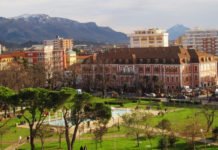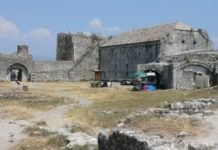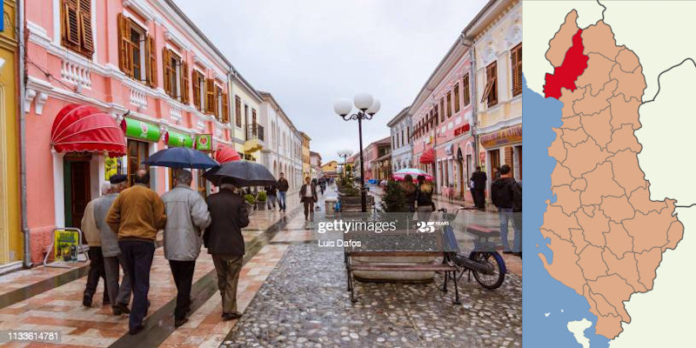
The Municipal Organization
The city of Shkodra is divided in two administrations. The District of Shkodra and the District of Highlands (Malësi e Madhe). The District of Shkodra includes 15 smaller districts (communes) which represent 135 villages. The district of Highlands’ municipality is located in the town of Koplik and includes 5 communes, which represent 55 villages.
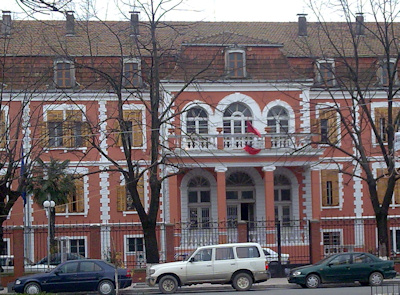 The Council for the District of Shkodra has 35 committee members, which includes a Chairman and a Vice Chairman. The Council members are elected by the district and are charged with the responsibility of governing the District. The Chairman is the Executive Branch of the government.
The Council for the District of Shkodra has 35 committee members, which includes a Chairman and a Vice Chairman. The Council members are elected by the district and are charged with the responsibility of governing the District. The Chairman is the Executive Branch of the government.
The Mayor of Shkodra is elected by the Shkodra citizens. The city of Shkodra has its own Council of Municipality, which has the right of decision.
Social Life
Shkodra is considered the cradle of the Albanian culture. This honorable distinction is due to the outstanding literary figures the city has produced: Marin Barleti, Zef
Jubani, Pashko Vasa, Gjergj Fishta, Kol Idromeno, Kasem Taipi, Kolë Kamsi, Migjeni, etc.
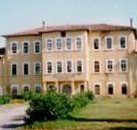 There are more than 90 cultural monuments, the most prominent being : Museum of the City, Rozafa Castle – with its own museum, the Lead Mosque, the Large Church – the largest church in the Balkans, Mes Bridge, and Migjeni Theater.
There are more than 90 cultural monuments, the most prominent being : Museum of the City, Rozafa Castle – with its own museum, the Lead Mosque, the Large Church – the largest church in the Balkans, Mes Bridge, and Migjeni Theater.
The City Library, located in the center of the city, has over 150,000 volumes, including rare historical works. In 1905, the first football in the history of Albania was held in Shkodra. The people of Shkodra, known as “Shkodrans” are well-known for their sense of humor.
The University “Luigj Gurakuqi” of Shkodra, has the faculties of Philology, History and Geography, Biology and Chemistry, Mathematics and Physics, and the College of Teacher Training. Most recently the faculty of Jurisprudence has been formed and a business college is being planed. It is the only University in Northern Albania.
| EDUCATIONAL DATA 1991-1992 Pre-elementary school Kinder garden – 174 Children – 5,844 Teachers – 278Elementary School(8-years) Schools – 122 Pupils – 38,858 Teachers – 871Secondary school Schools – 37 Pupils – 10,682 Teachers – 753 |
Undergraduate University – 1 Faculties – 2 Students – 2970 Teachers – 97HEALTH SERVICES Hospitals – 9 Beds – 1,118 Maternities – 26 Doctors – 259 Chemists – 39 Dentists – 68 |
Economic Overview
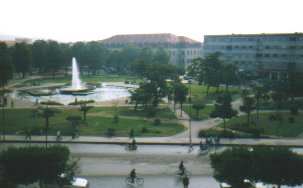 Shkodra, like the rest of Albania, has now just begun to introduce a free market economy. Fifty years of commanded economy was not able to take advantage of Shkodra’s rich natural sources, specifically the production of electricity and chrome.
Shkodra, like the rest of Albania, has now just begun to introduce a free market economy. Fifty years of commanded economy was not able to take advantage of Shkodra’s rich natural sources, specifically the production of electricity and chrome.
Most notably:
HYDROELECTRIC PLANTS, located on Drini river:
- Koman Plant with an output of 600,000 kwh
- Vau i Dejes Plant with an output of 250,000 kwh.
| MINERALS, FISHING, FARMING, EXPORTED ITEMS |
|||
| cooper ore clay limestone chrome |
carp eel herring beans |
wheat maize tobacco rice medical potatoes |
electric wire cable tobacco rugs plants fur/skins essence |
|
|
||||||||
The main foreign languages spoken in Shkodra are: Italian, English, German and French.
| NOTE: | The information is taken from the folder of “Shkodra District Council” 1993. For more information, please contact: Tel. 00355-224-3506, Fax: 00355-224-3720 / 2737. |

